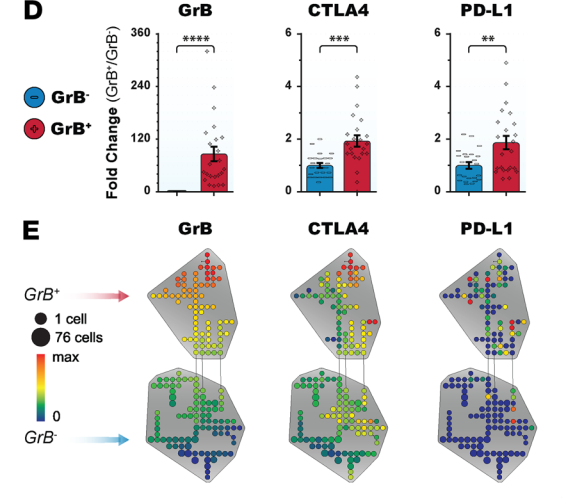Human regulatory T cells undergo self-inflicted damage via granzyme pathways upon activation.
Authors:
Sula Karreci E1, Eskandari SK1, Dotiwala F2, Routray SK1, Kurdi AT3, Assaker JP1, Luckyanchykov P1, Mihali AB1, Maarouf O1, Borges TJ1, Alkhudhayri A1, Patel KR4, Radwan A1, Ghobrial I3, McGrath M1, Chandraker A1, Riella LV1, Elyaman W4, Abdi R1, Lieberman J2, Azzi J1.
Abstract
Tregs hold great promise as a cellular therapy for multiple immunologically mediated diseases, given their ability to control immune responses. The success of such strategies depends on the expansion of healthy, suppressive Tregs ex vivo and in vivo following the transfer. In clinical studies, levels of transferred Tregs decline sharply in the blood within a few days of the transfer. Tregs have a high rate of apoptosis. Here, we describe a new mechanism of Treg self-inflicted damage. We show that granzymes A and -B (GrA and GrB), which are highly upregulated in human Tregs upon stimulation, leak out of cytotoxic granules to induce cleavage of cytoplasmic and nuclear substrates, precipitating apoptosis in target cells. GrA and GrB substrates were protected from cleavage by inhibiting granzyme activity in vitro. Additionally, we show – by using cytometry by time of flight (CYTOF) – an increase in GrB-expressing Tregs in the peripheral blood and renal allografts of transplant recipients undergoing rejection. These GrB-expressing Tregs showed an activated phenotype but were significantly more apoptotic than non-GrB expressing Tregs. This potentially novel finding improves our understanding of Treg survival and suggests that manipulating Gr expression or activity might be useful for designing more effective Treg therapies.

